We were elephant hunting in Botswana, on the edge of the Okavango Delta, with Richard Peake and Grant Albers of Savannah Sky Safaris, in May 2024.
The ground was dry and dusty, with just a few signs that the rains from Uganda were beginning to make inroads into the channels and gullys that would eventually become flooded and turn the whole area green and wet. This was early season elephant and we were cruising the bush glassing for animals moving into the tree line to feed or preparing to lie-up in cover when the heat of the day began to take effect.
It was day ten of a ten day hunt. This morning, we all knew, was the best last chance we had to connect with a bull. Once it got close to noon, experience had shown we were unlikely to see any moving. After nine long days and having sighted and tracked countless elephants, we still had not encountered a bull of the age and quality we sought.
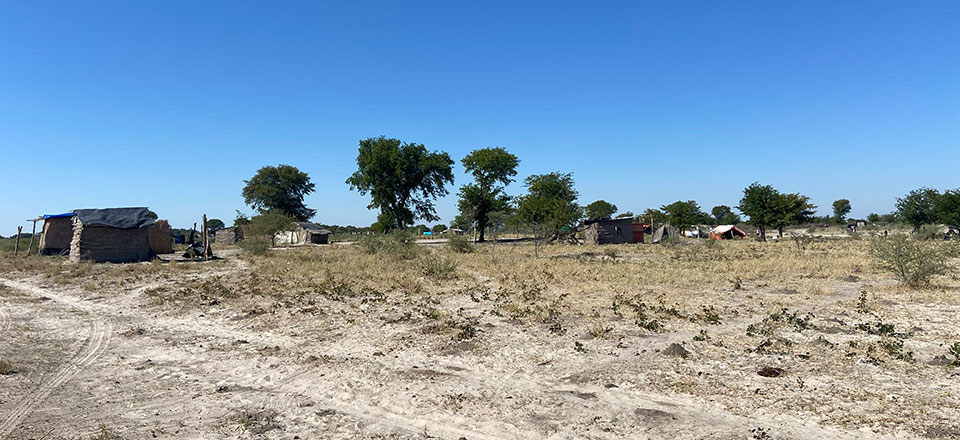
Starting at 07.00, we had picked up on a few bulls moving but nothing had proven satisfactory. It was then we got word from one of Grant's old trackers, now retired and living nearby, that a big, old grumpy bull had moved through his village. The day before it had chased some dogs and today it had killed a goat.
It appeared that the bull was 'in must', which is a condition of hormone and testosterone surges, typically prompting bull elephants to fight the boys and chase the ladies. Must bulls are dangerous and cranky. This one, apparently, had moved off into some very thick mopane and ironwood scrub not far away.
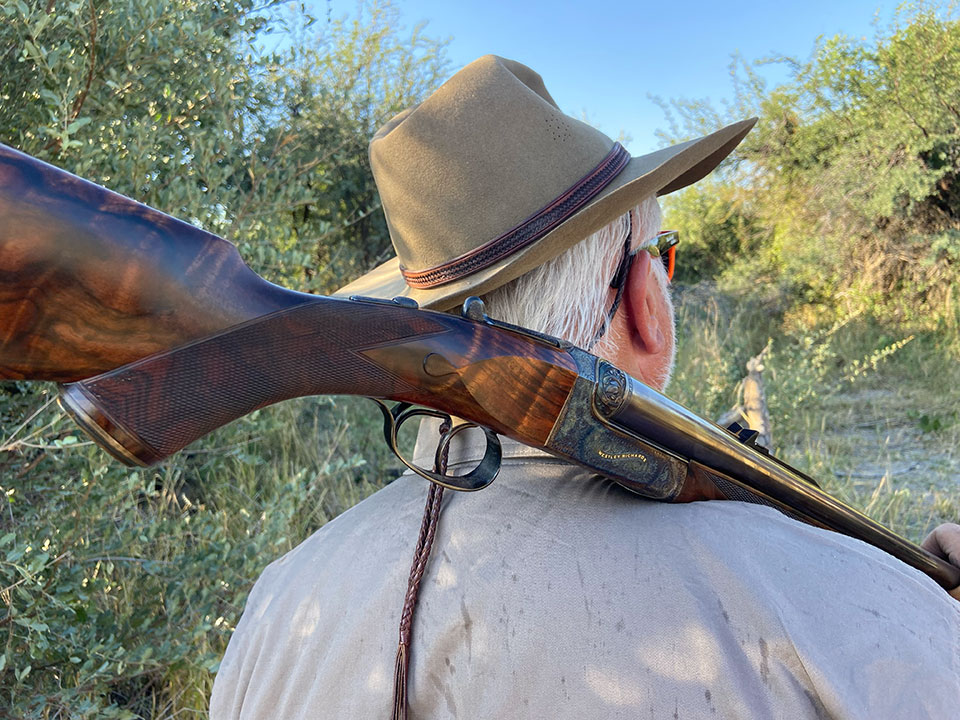
We de-camped and headed for the village, which was no more than a few mud and timber huts with grass thatch roofing, scattered around a dusty clearing. There, under a tree, sat Grant's old tracker. The two men had a brief chat in the local dialect before Grant gave the signal to head in the direction the bull had taken and look for some tracks to follow.
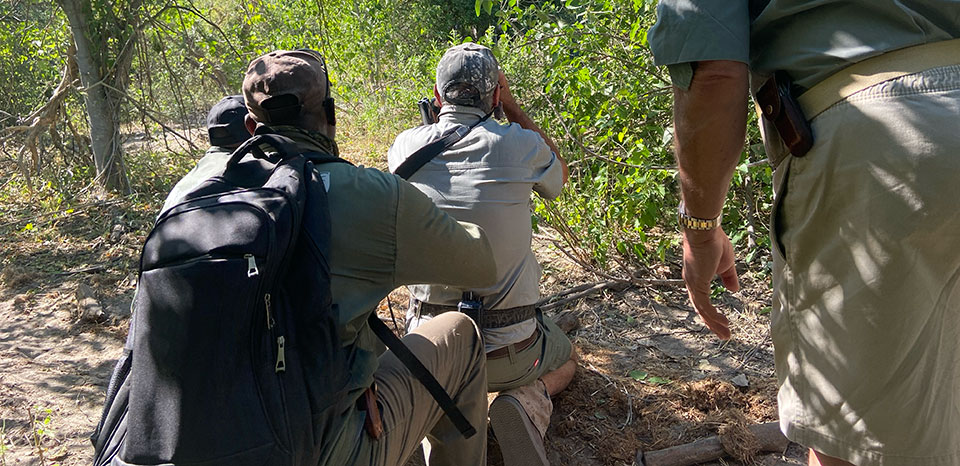
It didn't take long to pick up the trail and we folloed it for twenty minutes or so before the trackers pointed to a thicket with a couple of big trees, where the elephant had evidently decided to spend the hottest part of the day in the shade.
Now came the crucial task of carefully studying the beast, through binoculars, which was hard, as he was well hidden in the dense bush. Before moving in to take a shot, it was imperative that we establish that this was indeed an old bull with big tusks. Locals can exaggerate when describing animals to hunters and we needed to be sure with what we were going to engage before acting.
Several minutes passed as we tried to get closer and find angles to view him better through the brush, without being detected. If he got wind of us he would either run or charge. If the former, that would be the last we saw of him, if the latter, anything could happen, given the poor visibility.
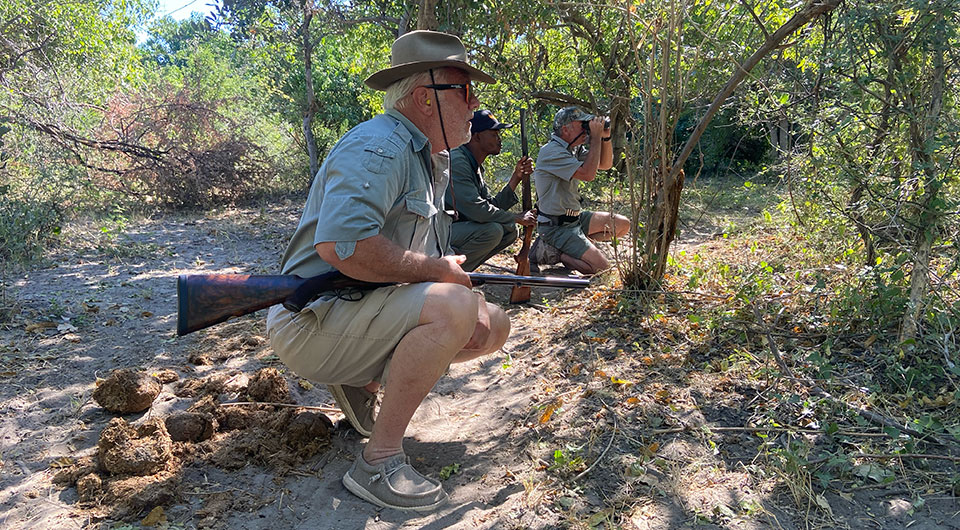
Michael gripped his Westley Richards .470 NE, loaded with 500-grain solid bullets, Grant his .500 Krieghoff double. This was time to take deep breaths, look long and hard and be ready for anything. Eventually, Grant signalled that the bull was good and that concentrated the mind of everyone involved.
Unfortunately, due to the thickness of the cover, MJ would not be able to shoot from a standing position. Instead, he would have to kneel to take the shot. This is not ideal but you have to take your chances as they are presented, not as you wish they might be.
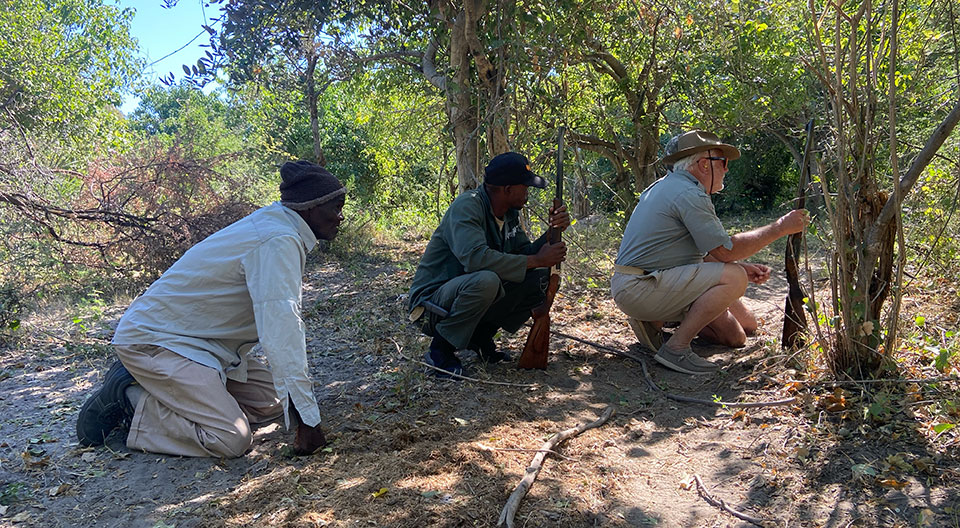
Moving forward, MJ closed the distance as best he could, tried to see a clear line to the elephant and envisage a killing shot befopre raising his rifle.
On one knee, making sure his weight was distributed to take the recoil as well as possible, he discharged his first shot at the top of the elephant's front leg, beyond which lies the heart.
Brain shots are all well and good but if the first shot is a clean hit in the heart/lung area, your beast will go down. Miss the brain by a fraction of an inch and he could take off, never to be seen again. In this dense bush, the chance of subsequent shots is not guaranteed and the first one must be well placed.
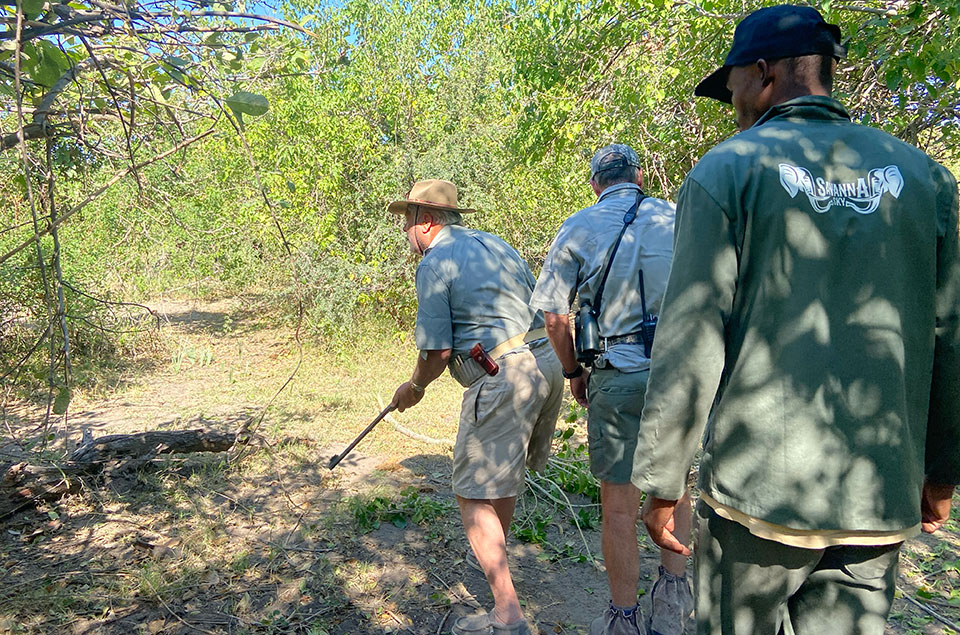
With the first report breaking the still air, the bull crashed out from his resting place, thankfully away from us and to the right. As Grant shouted to MJ to take a second shot, it rang out, MJ ejected his cases and re-loaded, as we moved at pace to follow the stricken beast as it stumbled through the scrub.
It had dropped to its knees in the immediate aftermath of the first shot, indicating a good heart shot, but it got up and kept going, fuelled by adrenaline.
Each time we got a clear sight, MJ fired into the fleeing hulk. The rule is simple, don't stand back and admire your marksmanship: if a dangerous animal is on its feet, keep shooting!
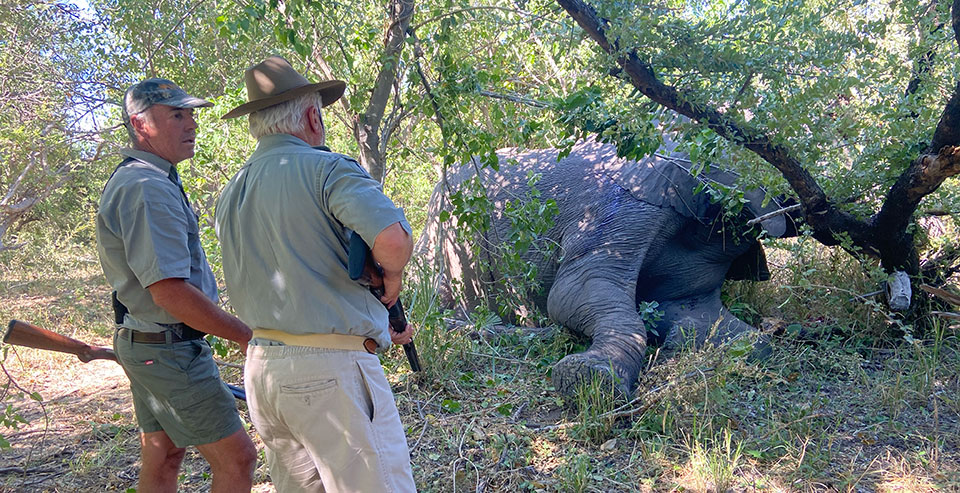
After a pursuit of around 200 yards, he had run out of steam and came to rest next to an ironwood tree, which he started to collapse into, as MJ put in his finishing shots.
As the bull groaned his last, relief and tension broke as it dawned on all present that the hunt was over and the drama concluded. Handshakes and back slaps all-round maked the occasion, as we contemplated the situation.
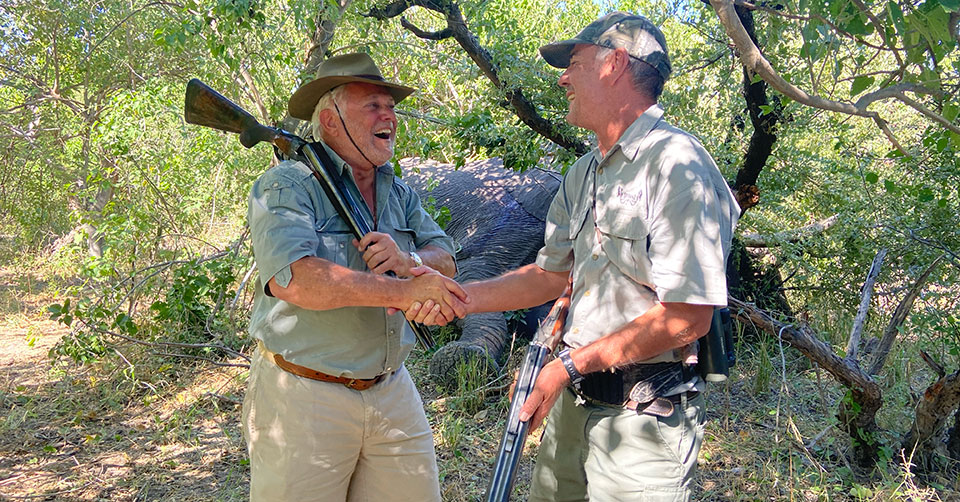
The .470NE had done its work, it is an ideal elephant rifle in the opinion of many professional hunters. Conceived in 1907 as a replacement for the .450NE, which was outlawed in British territories, it delivers almost identical performance and combines proper stopping power with good penetration. That penetration is essential on thick skinned, heavy boned, massive bodied animals, like elephants.
A solid bullet with good sectional density may have to travel a long way, especially when raking a departing beast and trying to find a vital organ. That penetration can be the difference between succes and failure.
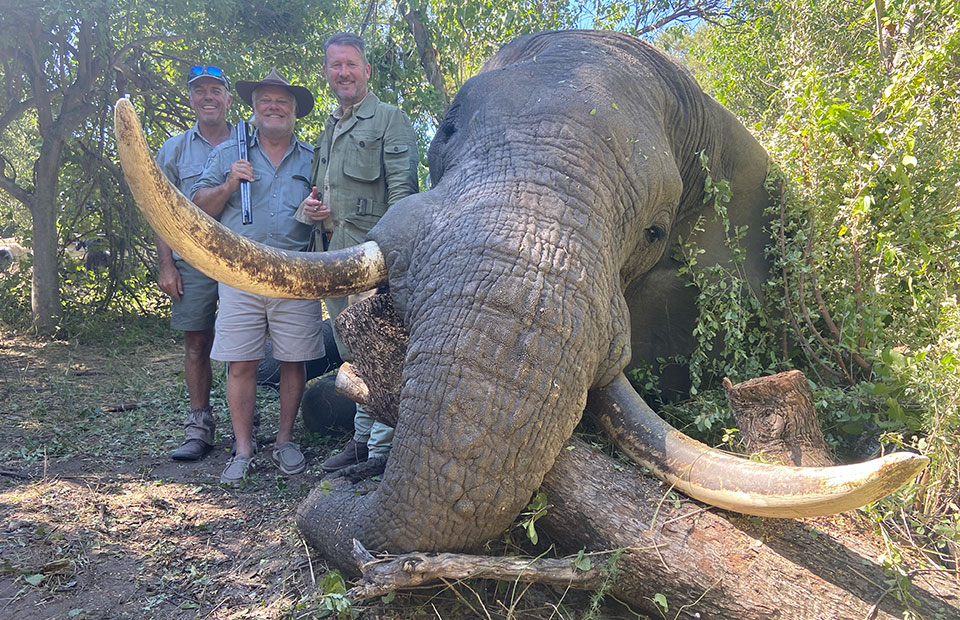
Once the axes and saws came out and we had cleared the vegetation from around the fallen bull, we were able to confirm what Grant had thought; he was indeed an old man and he was in 'must'. What's more, he sported a very nice, evenly matched pair of tusks, which were thick and wide spread.
Grant had estimated these to be in the 70lbs region when looking over the animal in his binoculars. Now, up close, he was beginning to think they may actually be rather bigger.
Read the final part in next month's VGJ.
Published by Vintage Guns Ltd on



